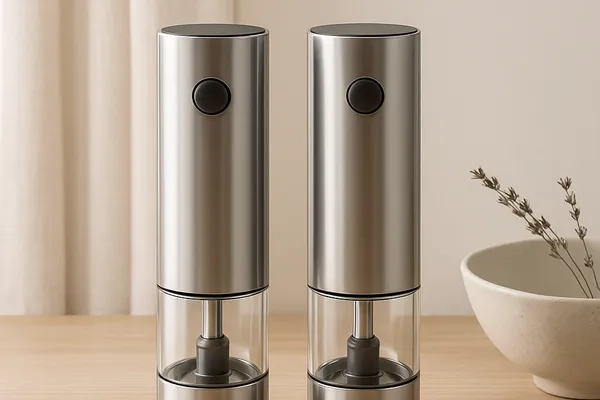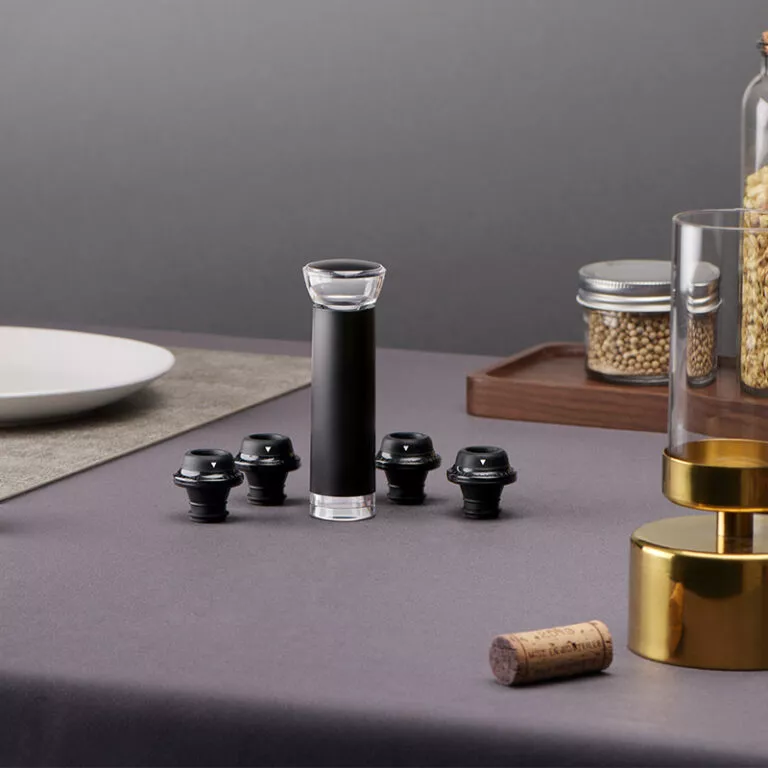I used to wrestle with sticky pepper mills that scattered grounds everywhere. It was frustrating, and I wanted a better way to enhance my cooking while keeping my kitchen tidy.
Ceramic or stainless steel can both work, but stainless steel offers greater durability, corrosion resistance, and long-term consistency, making it the better choice for most home and professional users.

I remember the turning point when I switched from a flimsy plastic mill to a robust stainless steel model. My pepper came out perfectly ground, and cleanup became so much simpler. I no longer worried about the grinder jamming or wearing out. Over time, I saw how stainless steel’s sturdy build excelled in busy kitchens, big family dinners, and even restaurant use. If you’ve ever dealt with worn-out parts or messy pepper dust, then you know why material quality is vital. Let’s walk through everything I learned and answer key questions to help you choose wisely.
What is the best material for salt and pepper grinders?
I once believed any grinder was fine, until I tasted dishes that used fresh, evenly crushed spices. Then I realized material can affect flavor extraction and general maintenance.
Stainless steel stands out as the top choice for salt and pepper grinders. It resists corrosion, holds up under daily use, and delivers consistent performance for longer.

Comparing Grinder Mechanisms
There are three main materials used in grinder mechanisms1: ceramic, stainless steel, and plastic. Each one has its strengths and limitations. I’ve used all three and quickly noticed the difference in texture, grind consistency, and longevity.
| Material | Durability | Corrosion Resistance | Maintenance | Grind Consistency | Best For |
|---|---|---|---|---|---|
| Stainless Steel | High | High | Easy | Excellent | Daily heavy use |
| Ceramic | Medium | High | Medium | Good | Occasional home use |
| Plastic | Low | Low | Difficult | Poor | Temporary/light use |
Why Stainless Steel Wins
Stainless steel burrs are sharper and denser, allowing precise cuts through dense peppercorns and coarse salts. They don’t chip like ceramic, and they’re not as brittle. I also find stainless steel easier to clean. Unlike ceramic, which can absorb some oils from specialty peppers, stainless steel wipes clean with no residue. This keeps flavors pure across uses.
Tip: If you use Himalayan pink salt or flavored pepper blends, stainless steel grinders reduce flavor contamination and resist buildup. That’s why I only use stainless steel in my kitchen now—for both performance and sanitation.
What is the difference between a salt grinder and a pepper grinder?
I used to think salt grinder2s and pepper grinders were identical. That confusion led me to mix them up, causing uneven grinds and dull tasting meals.
A salt grinder is built to crush larger, moisture-rich crystals, while a pepper grinder is made to break down tough, oil-rich peppercorns. Their internal mechanisms are designed differently.
Functional Differences That Matter
Salt and pepper seem similar, but they behave differently when ground. Salt is harder and can attract moisture. Pepper is oily and slightly softer but requires more cutting action. Each spice demands a matching burr design.
| Grinder Type | Key Internal Difference | Risk if Misused |
|---|---|---|
| Salt Grinder | Non-corrosive, wider openings | Clogs or rusts with pepper |
| مطحنة الفلفل | Sharper burrs for dry, hard seeds | Wears out quickly with salt |
Real Use Cases
I once tried grinding coarse sea salt with a pepper grinder. After a few weeks, the mechanism corroded. The oil from peppercorns can also clog a ceramic salt grinder. Since then, I’ve kept two clearly labeled stainless grinders—one for salt, one for pepper. I now enjoy smoother grinding and better tasting food.
Small Tip: Look for grinder sets that clearly mark the containers or use different colored tops. It avoids confusion, especially if you’re in a rush while cooking.
How do I choose a salt and pepper grinder?
I recall the frustration of constantly refilling a grinder with tiny capacity. I also remember cleaning a poorly designed grinder that left salt dust everywhere. These experiences taught me to pick carefully.
Choose a grinder with durable materials, adjustable settings, a large filling chamber, and an easy-to-hold shape. Make sure it’s simple to refill and clean regularly.
Key Features to Prioritize
When I select a grinder, I follow a checklist to make sure it fits my cooking habits. These features help reduce mess and improve performance over time.
| Feature | Why It Matters |
|---|---|
| خشونة قابلة للتعديل | Lets you match texture to dish (e.g. fine for eggs, coarse for steak) |
| Refillable Design3 | Easy access prevents spills during refilling |
| Grip Comfort | Avoids wrist strain, especially for frequent use |
| Visual Clarity | Lets you see when it’s time to refill |
| Cleaning Access | Removable burrs prevent stuck residue |
Smart Selection Strategy
I recommend stainless steel grinders that combine durability with a modern, clean look. They match most kitchens and resist smudges. Also, check if the grinder stands upright after use—some models leave leftover grounds on your counter.
نصيحة احترافية: For busy kitchens or restaurant use, choose electric stainless steel grinders. They grind quickly with one hand and reduce wrist fatigue. That’s one reason I switched and never looked back.
What size pepper grinder is best?
I’ve owned tiny novelty grinders that clogged after a few uses and giant ones that barely fit in my cupboard. So I know size can influence daily convenience.
A medium-sized grinder between 6–8 inches is best for everyday home use. It stores enough peppercorns without being too bulky and is easy to operate with one hand.

Finding the Right Fit
Grinder size affects4 both how often you refill it and how comfortable it is to use. Small grinders need frequent refills. Oversized ones can be awkward or too heavy for daily use.
| Grinder Size | الإيجابيات | السلبيات |
|---|---|---|
| Small (<5") | Compact, travel-friendly | Frequent refills, limited use |
| Medium (6–8") | Balanced, ergonomic, stores enough | Ideal for most users |
| Large (10"+) | Great for restaurants or showpieces | Bulky, hard to store |
Matching Size to Lifestyle
If you cook simple meals for one or two people, a medium-sized grinder will do just fine. It lasts a week or more without needing a refill. If you run a food service or love prepping big meals, a larger grinder might save time. I keep a medium grinder on my counter and a compact one in my travel kit when I go camping or stay at a rental.
Mini Hack: Choose grinders with clear viewing windows so you can always tell how much remains. That simple feature has saved me from running out in the middle of dinner prep more than once.
الخاتمة
Choosing stainless steel salt and pepper grinders with the right size, settings, and design improves daily cooking and simplifies cleanup. It’s one small change that makes a big difference.
-
Learn about various grinder mechanisms to choose the best one for your cooking needs and enhance your culinary experience. ↩
-
Explore this link to understand the unique features and benefits of using a salt grinder for your cooking needs. ↩
-
A refillable design ensures convenience and minimizes mess, making your cooking experience smoother and more enjoyable. ↩
-
Learn how the size of your grinder can impact your cooking experience and convenience in the kitchen. ↩




